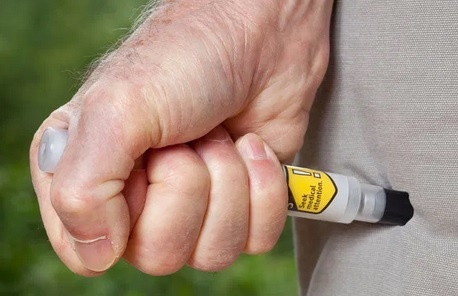People need to know that anaphylactic shock, or anaphylaxis, is the body’s generalized reaction to an allergenic substance. This reaction occurs very quickly and includes several excessive responses from the respiratory, cardiovascular, digestive and dermatological systems. If not stopped immediately, anaphylactic shock can be life-threatening.
When a person first comes in contact with a substance that is considered by his body as an allergen, the immune system becomes sensitized and will react in future contacts that the body has again.
These subsequent contacts will cause a series of allergic reactions mediated by the specific IgE antibody and it may happen that, at some point, a sum of several of these reactions may occur, causing anaphylactic shock.
The symptoms of this condition are: dizziness, dizziness, palpitations and sweating of the glottis, vomiting, respiratory distress and loss of consciousness.
Treatment of this conventional anaphylactic shock
If someone has an IgE-mediated allergy to a substance or food product, it is vitally important to always carry the adrenaline auto-injector with them and know how to use it in an emergency, as it is the first treatment for the anaphylactic shock to be used.
Proper injection can be very helpful and can save a person’s life. After taking it, you should go to the hospital immediately, as anaphylactic shock may recur.
If your child is allergic, I recommend that parents make them aware of their problem from an early age. It is not a matter of alarming them, but of making them aware of the severity of their allergy, so that they know how to act if the opportunity arises. Caregivers, teachers or relatives of the minor should also know how to act in case of anaphylaxis.
The adrenaline injector is simple to use. It is applied intramuscularly and the shape of the pen allows self-injection without the need to remove clothing.
In many cases, when there is an IgE-mediated allergy, the only possible precaution to avoid anaphylactic shock is to stay away from the allergenic substance, although this is sometimes difficult, especially when the allergy is due to insect bites or certain foods. which can be camouflaged in recipes or ingredients.
Researchers say that this shock occurs in only 1% of cases, although no individual (regardless of age, sex or race) with a history of allergy and / or severe asthma is exempt from suffering.
